This is the place wherein I spent seven years of my childhood and early boyhood. I studied in the then Vijay High School Mandi from 2nd to 8th standards, from the years 1959 to 1966. During our recent trip to that side of Himachal, my wife and I just skirted Mandi on our way to Manali from my present hometown in Kandaghat, Shimla Hills. My first reaction was that it has now grown into a crowded (concrete jungle), dusty and warm place (in early September, that is; Mandi is a little less than 3500 ft in altitude), unlike a hill station:
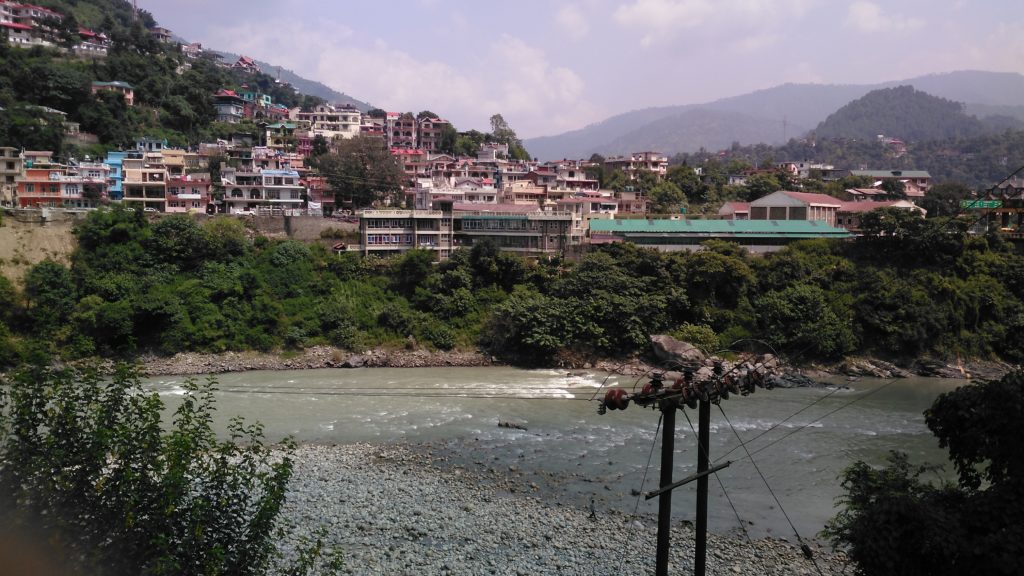
But, on our way back, we stopped at Mandi and re-discovered its native charm.
First of all, since it is indeed nostalgic for me, I start with a visit to my school: Vijay High School, named after the 16th rajah of Mandi: Bijai or Vijay Sen. If you think that his surname sounds Bengali, you are indeed right! Mandi as a princely state was founded by Bahu Sen, a descendant of the Sen dynasty of Rajputs from Bengal. Initially, his title was that of a Chief (Rana). However, his descendants became the rajahs of Mandi, which came up as a city only in 1526 in the reign of Ajbar Sen.
When we asked for directions to Vijay High School, the locals just blinked their eyes. Later, during my calling on the principal, I came to know that when the school became a senior secondary school, the name Vijay was dropped. However, the name board behind the principal’s (Sh. Paras Singh Saini) seat in his office still had the name Vijay on it.
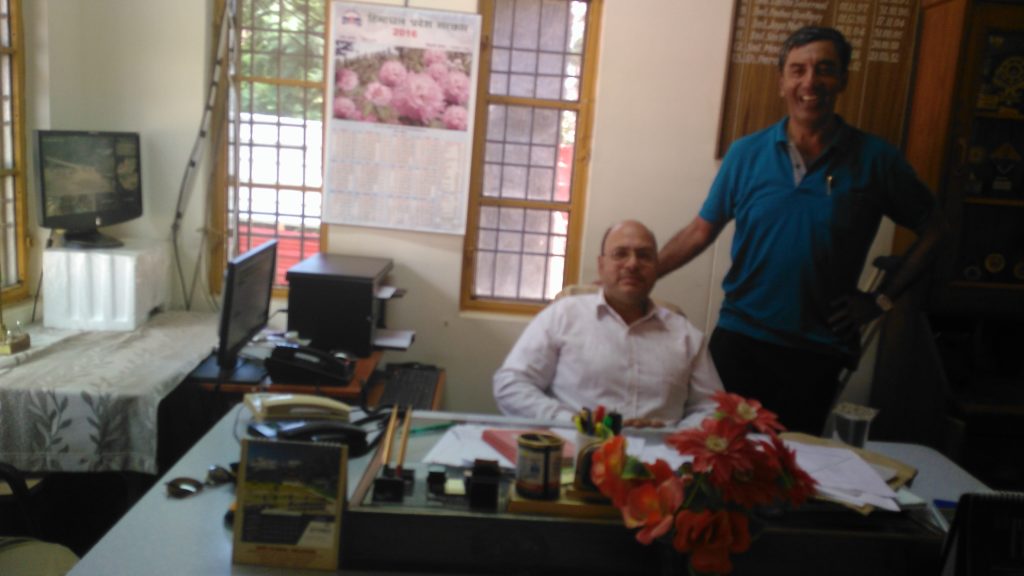
The present office building of the school houses the science laboratory and I compared it with the slate-roofed building in which I sat as a student of the 6th class, on a mat on the floor:
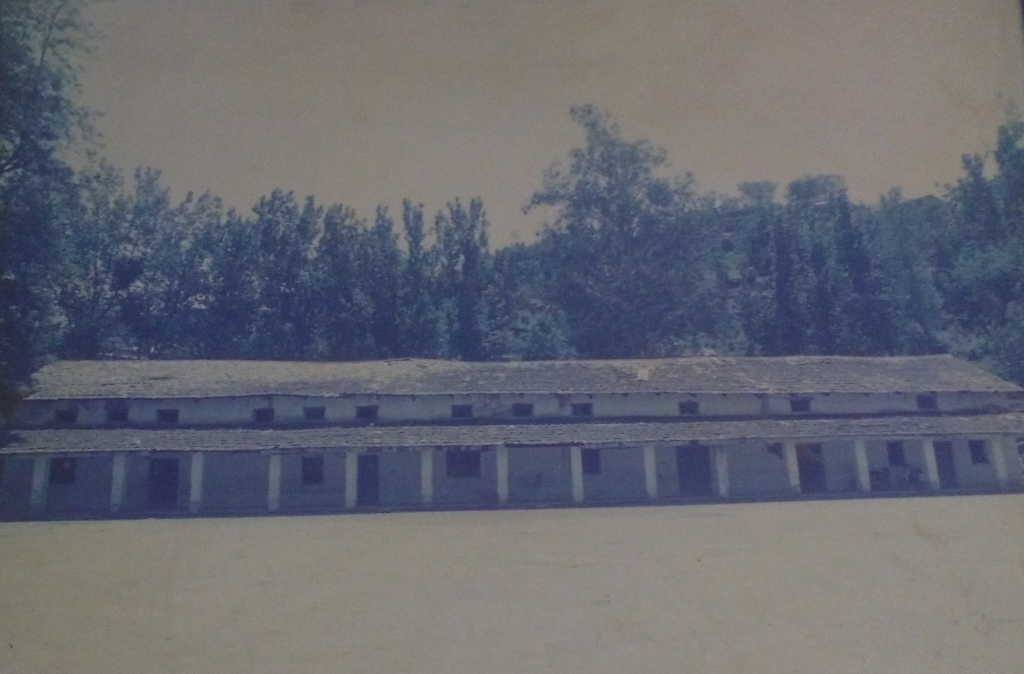
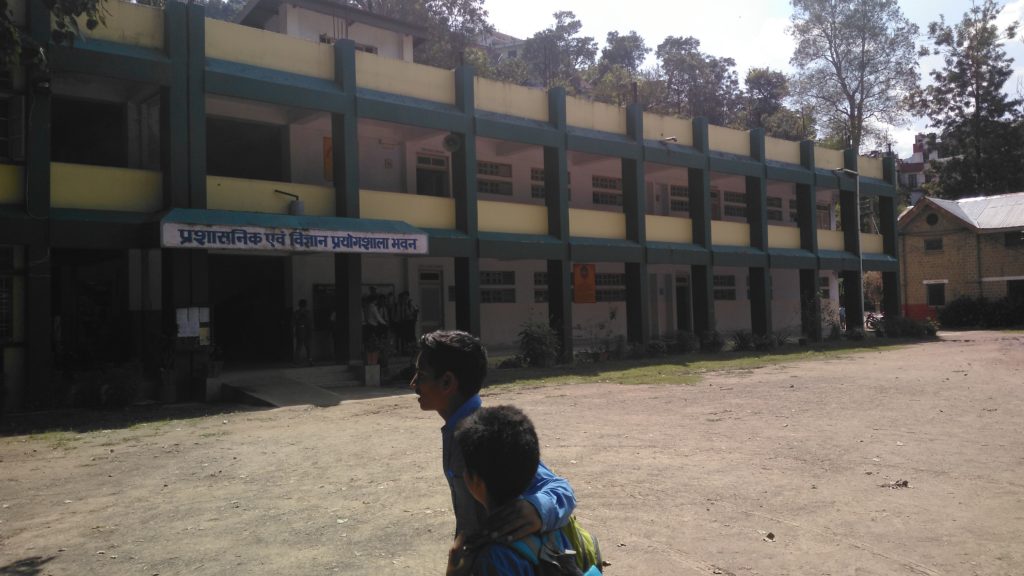
The erstwhile new L block, next to the assembly ground is still there. This is where I did my 7th and 8th standards from:
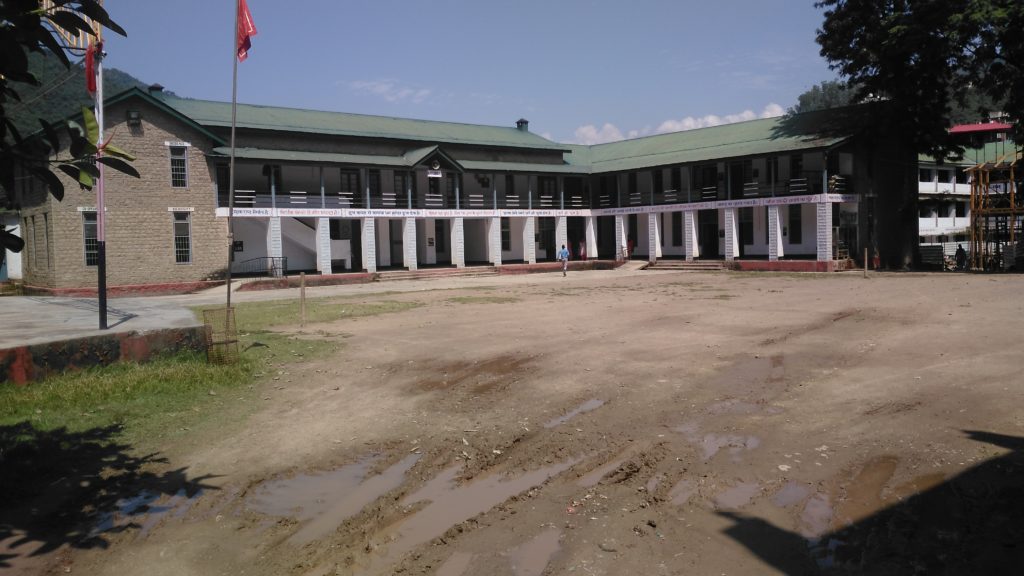
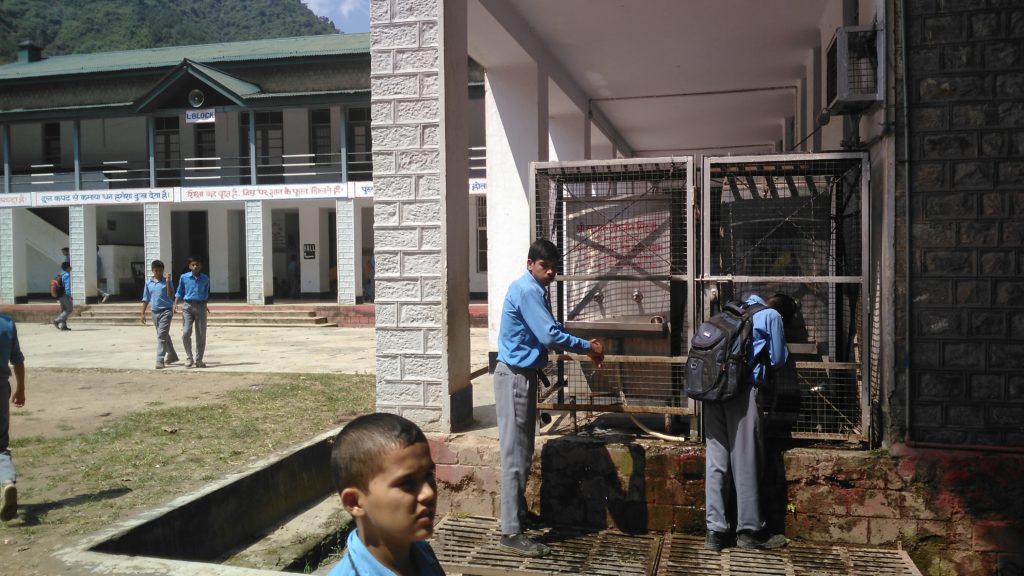
But, more than anything, I was interested in the old school building which was to be declared a UN heritage building. The principal saddened me by informing that it had not yet been accepted as a UN heritage building since there was some controversy about the year of its construction. I could see massive renovation work in progress to restore it to its old glory:
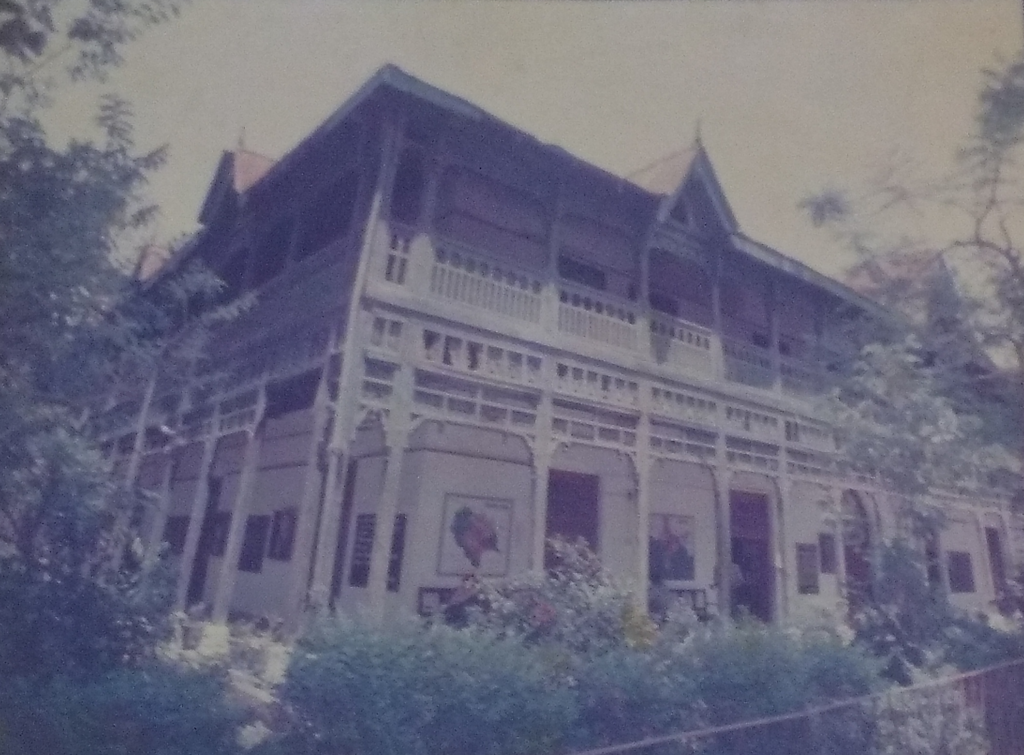
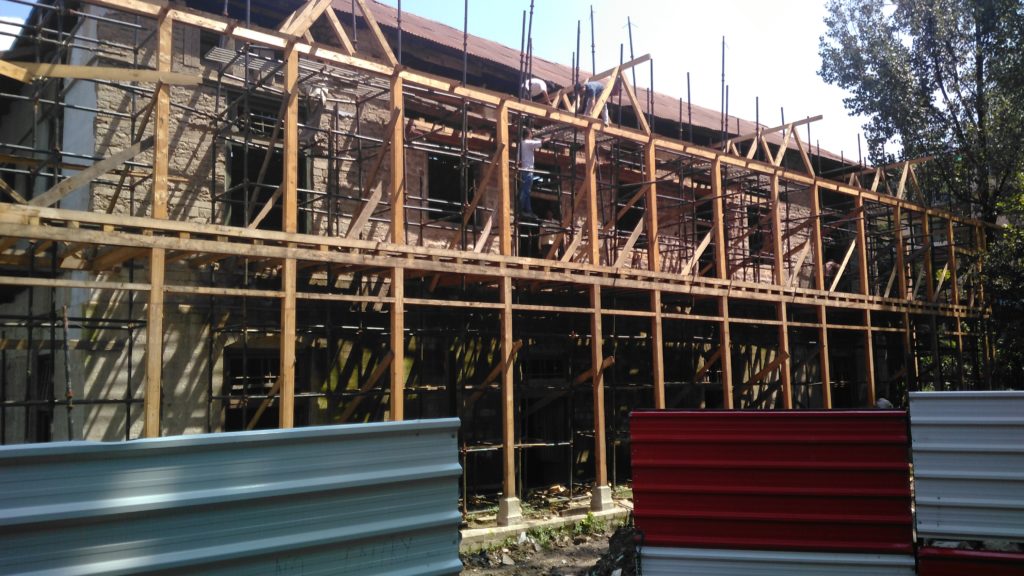
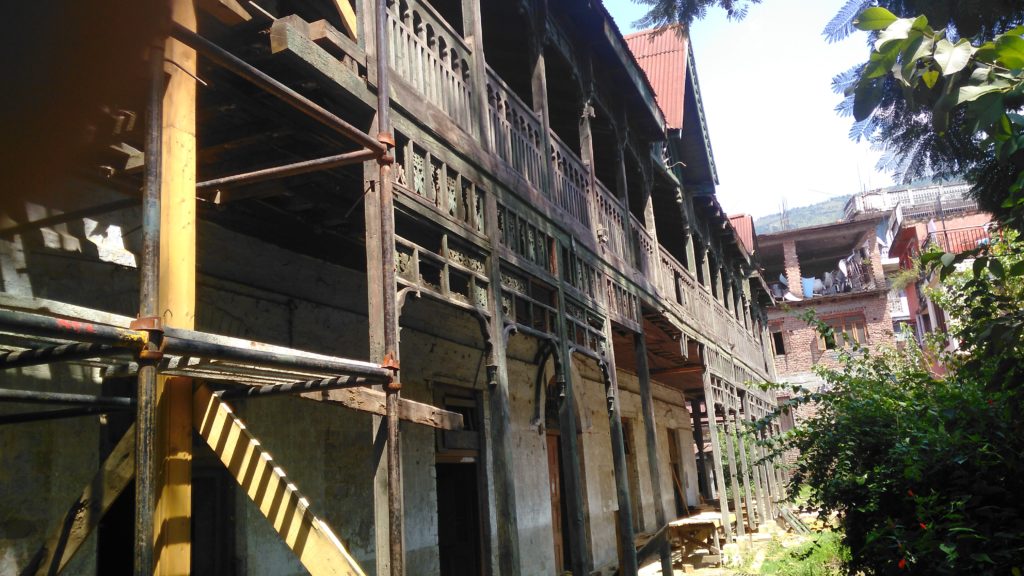
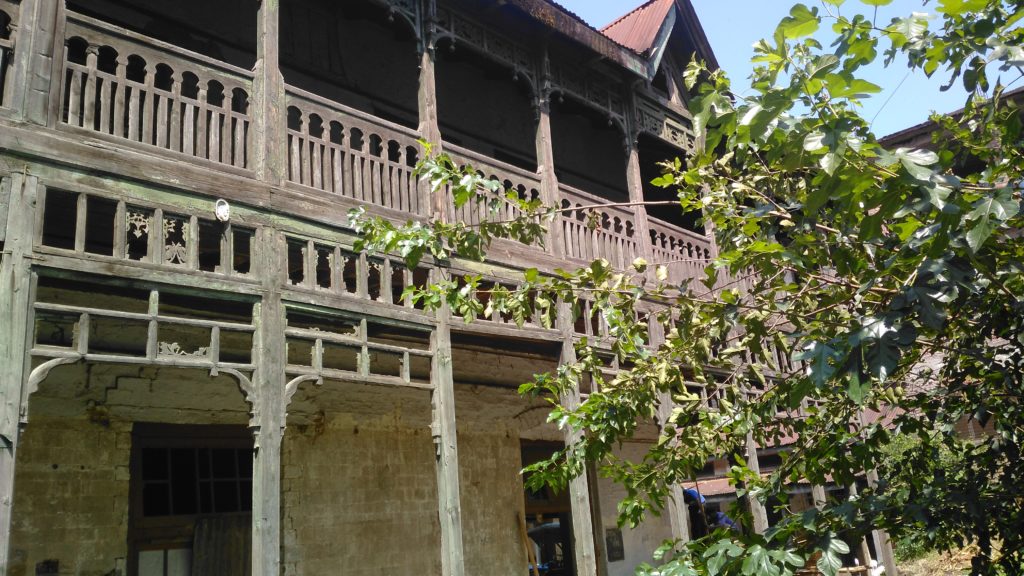
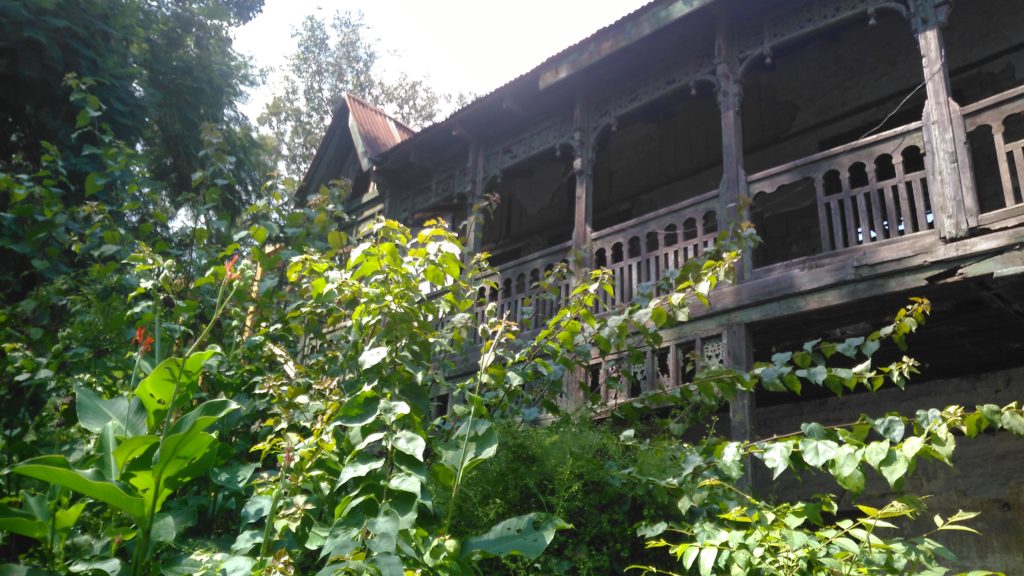
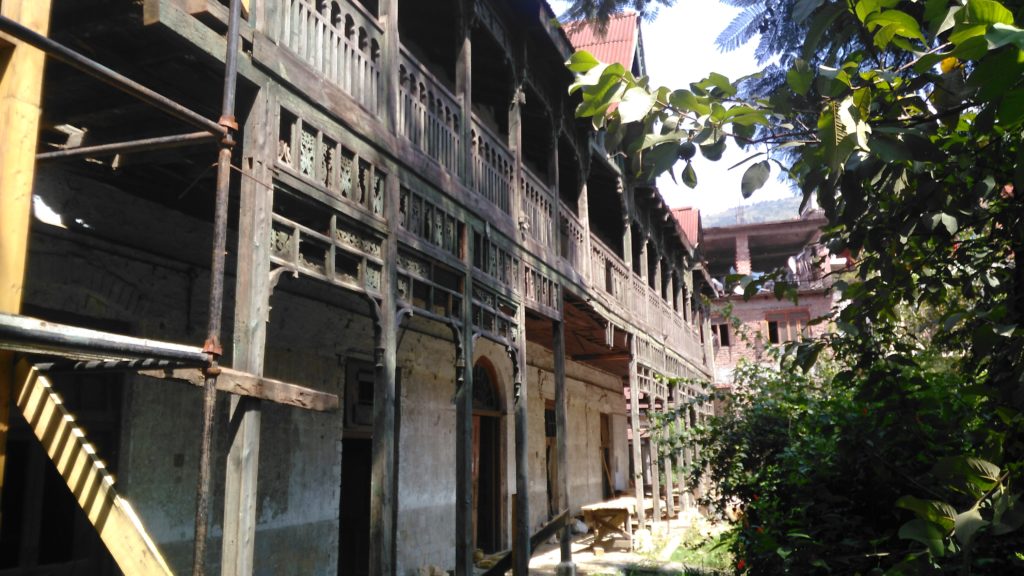
The block behind the old building also used to have slate roof and this is where I studied in my primary classes:
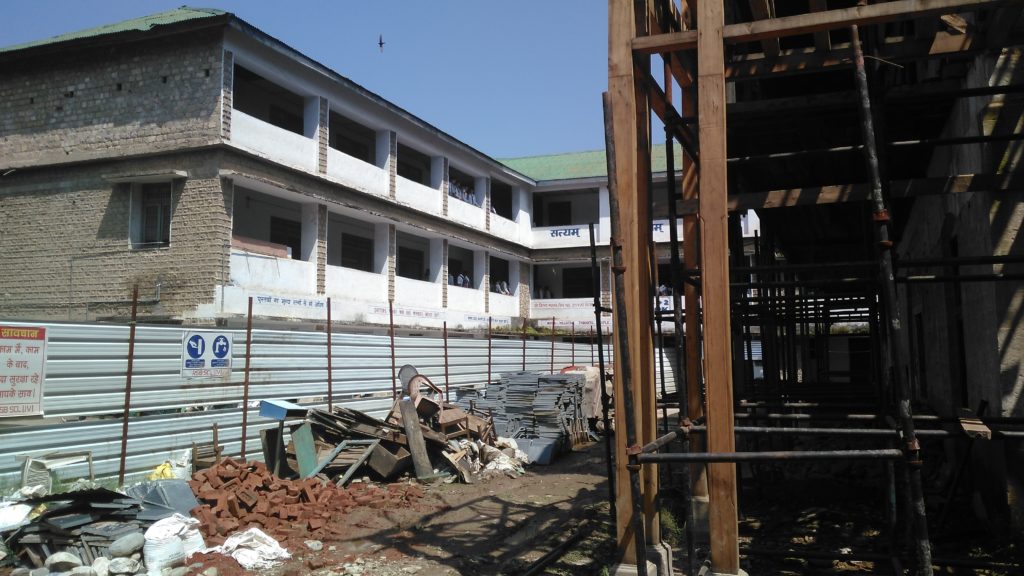
I also located the erstwhile main gate of the school (now kept closed):
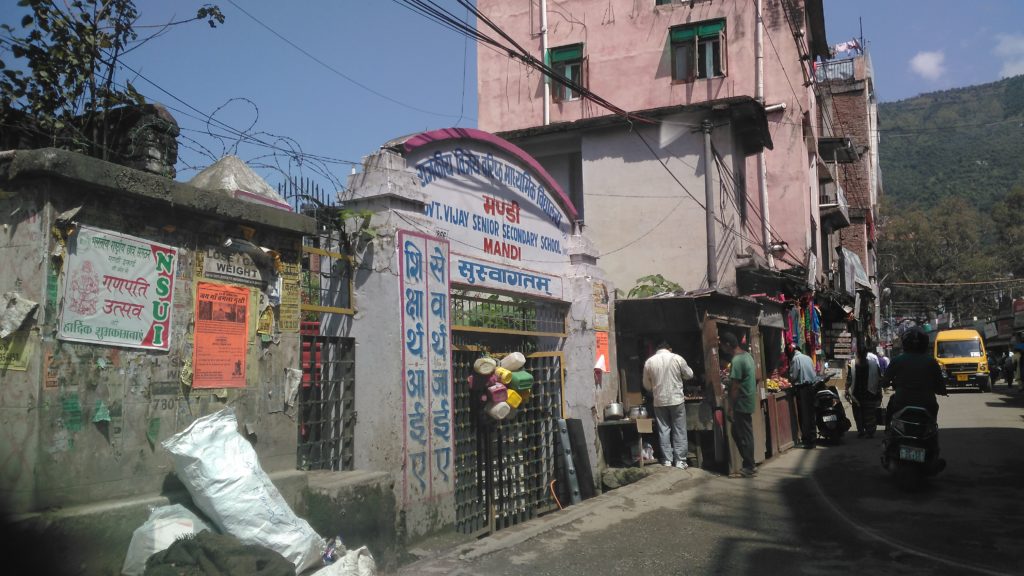
The first view of the school, as one descended the steps from the school gate used to be this:
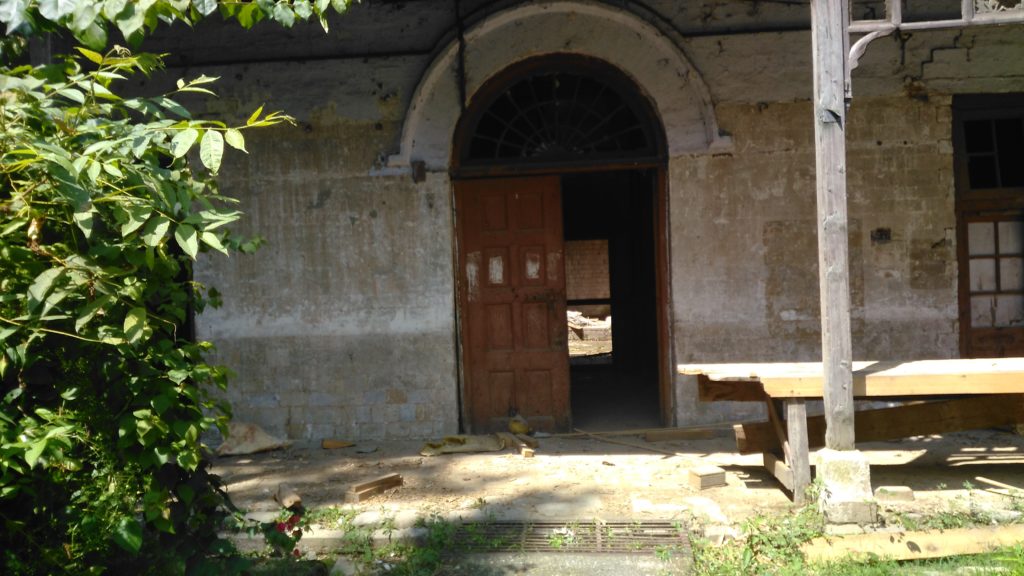
One’s school is important to oneself only and hence you must have been eagerly waiting for me to take you around the rest of Mandi. Alright, here we go:
First of all, Mandi is not a big town. In the 2011 census, Mandi’s population was only about 26000, which is less than one-tenth of the population of Kharghar in Navi Mumbai wherein I reside half the year. Mandi is called the Kashi or Benares of Himachal because of innumerable temples there. I take you first to the Tarna temple atop the hill adjoining the Vijay High School. The hill itself is called Tarna Hill and the temple was built by Rajah Shyam Sen in honour of goddess Kali.
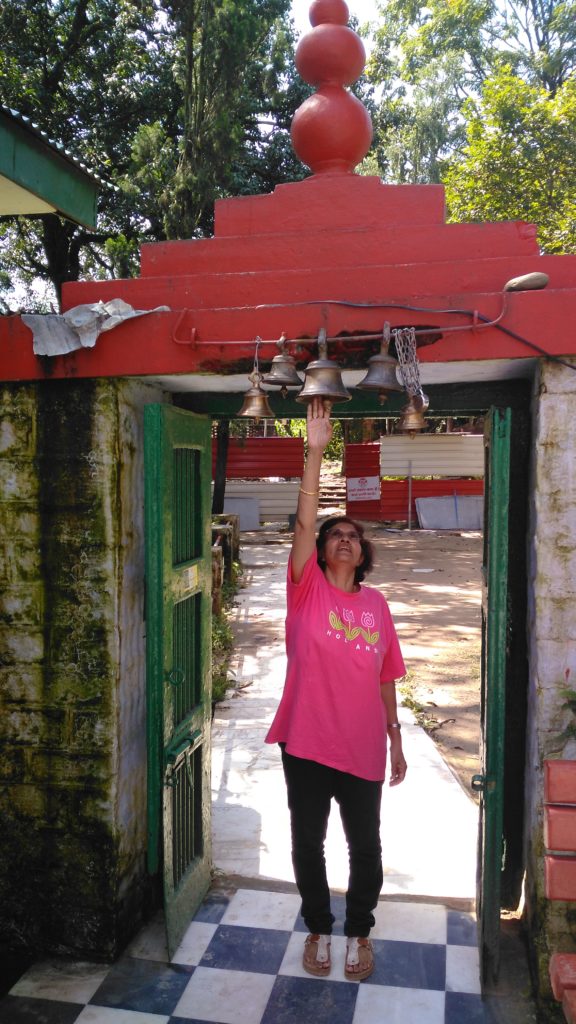
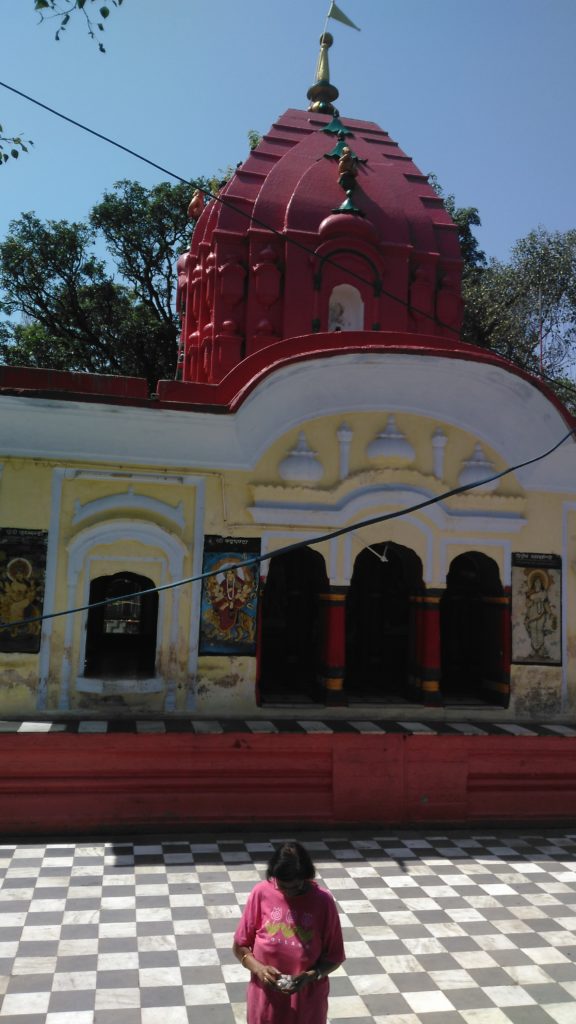
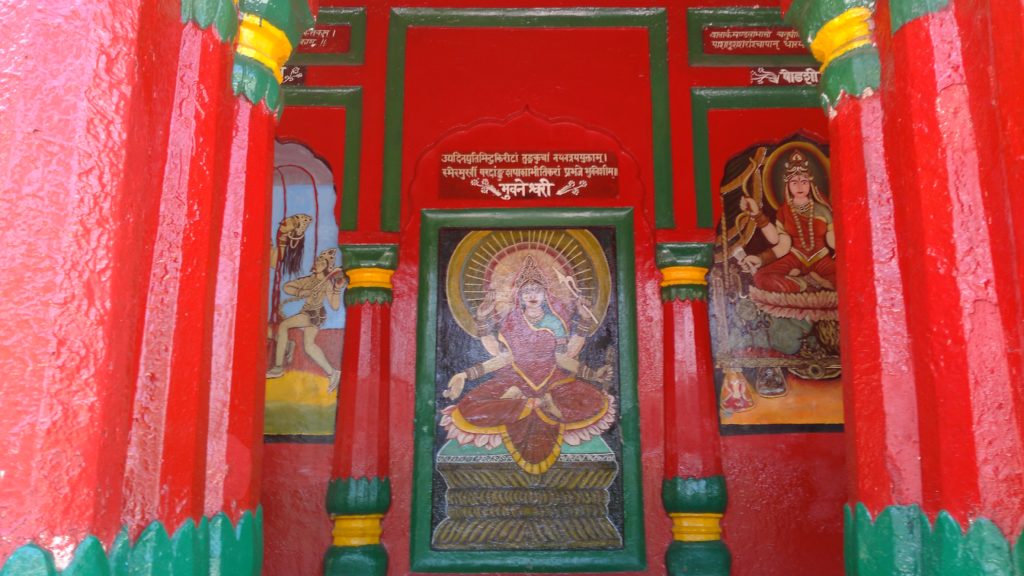
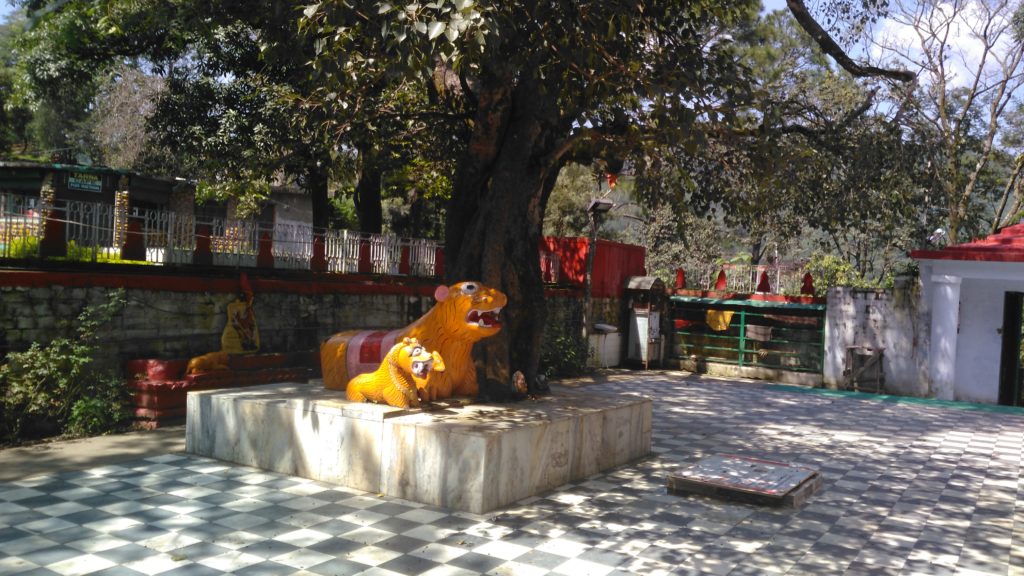
When I was small, we could see most of Mandi from here including the Paddal Ground. We asked a street-sweeper next to the temple and he shrugged his shoulders. I walked in the general direction that I remembered of more than 50 years ago and there it was hidden by the houses having been constructed around it. Paddal ground is next to Mandi university. The view of the Beas from the place from where I could see this ground is also awesome. Here are a few pictures:
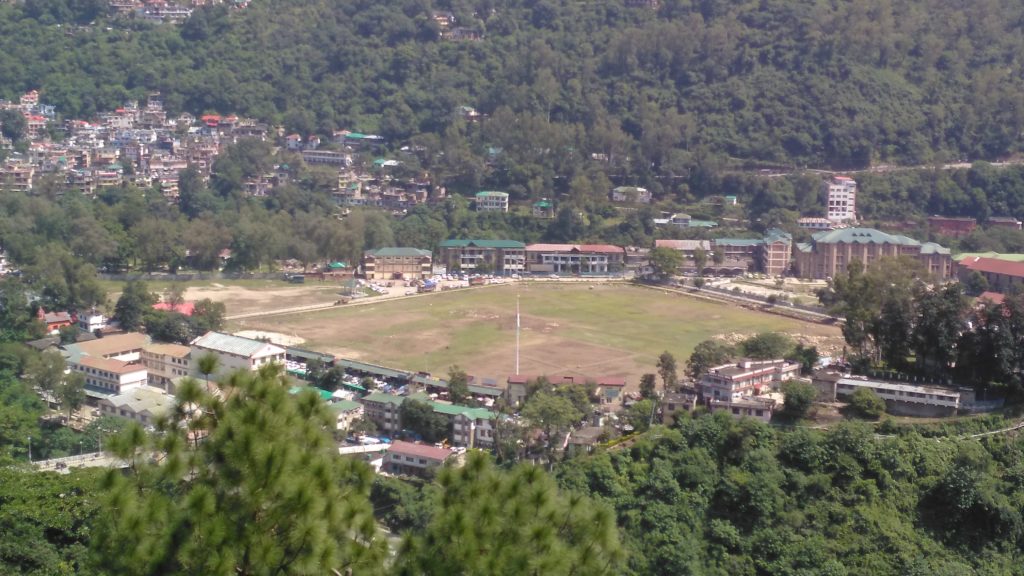
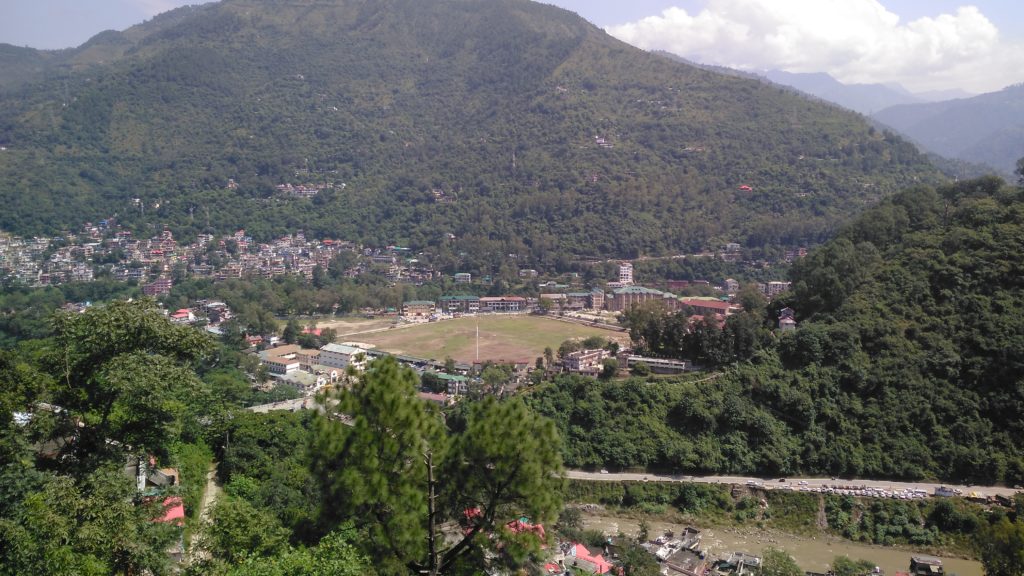
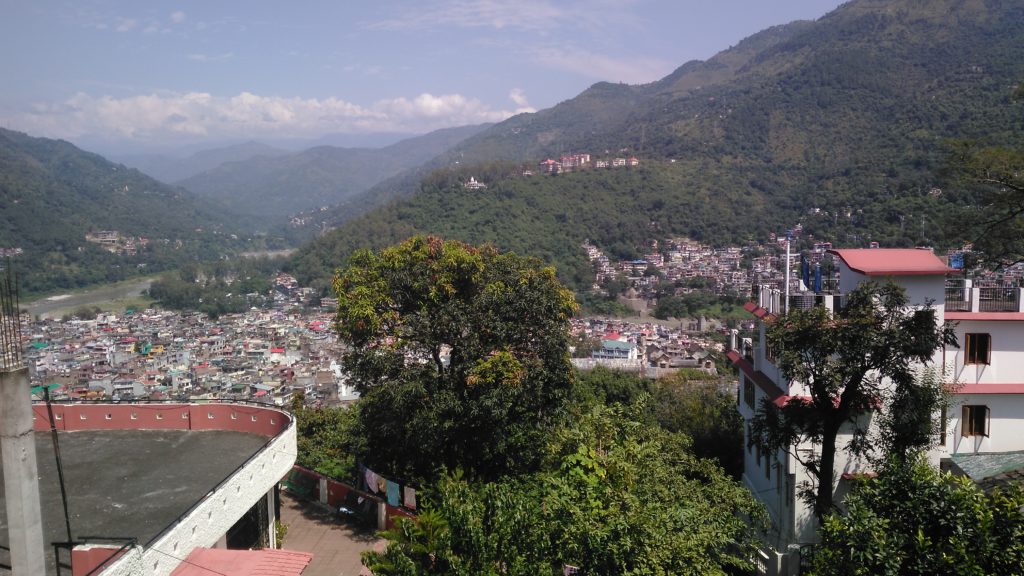
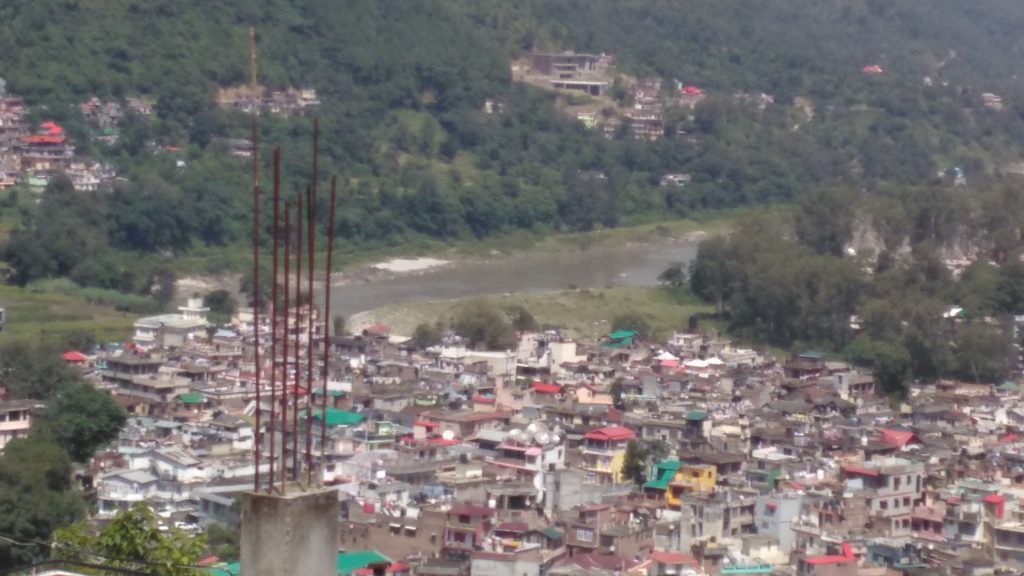
Bhootnath Temple (a temple devoted to Lord Shiva) was in the route of my walking to school from my home in Jawahar Colony (A colony of the Horticulture and Agriculture department (my dad served in the former) to my school. Mandi owes its existence as a city to Raja Ajber Sen and the way he founded it, it was built with the temple (1527 AD) being the centre of the city:
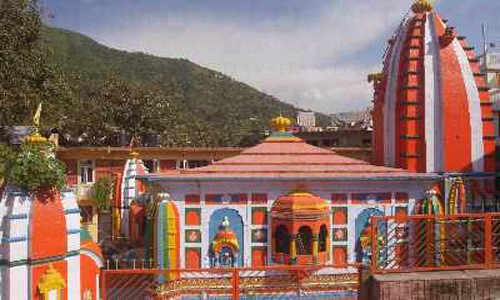
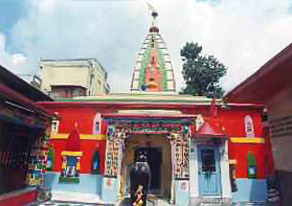
How important this temple is to the city of Mandi can be made out from this: Raj Madhav Rao, the ruling deity of Mandi, used to offer prayers here before commencing the festival of Maha Shivratri. However, during my childhood no paint was used over the stone structure of the temple:
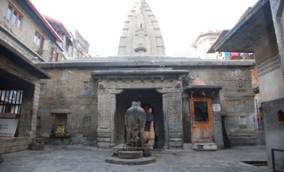
Maha Shivratri is the most important festival in Mandi and silver and gold idols of the deities from neighbouring temples (81 of them) are brought to the centre place of Mandi (near the Ghanta Ghar (Watch Tower). During this year, it was held from 7th to 14th of March. It has assumed widespread recognition nowadays and is called International Maha Shivratri festival of Mandi:
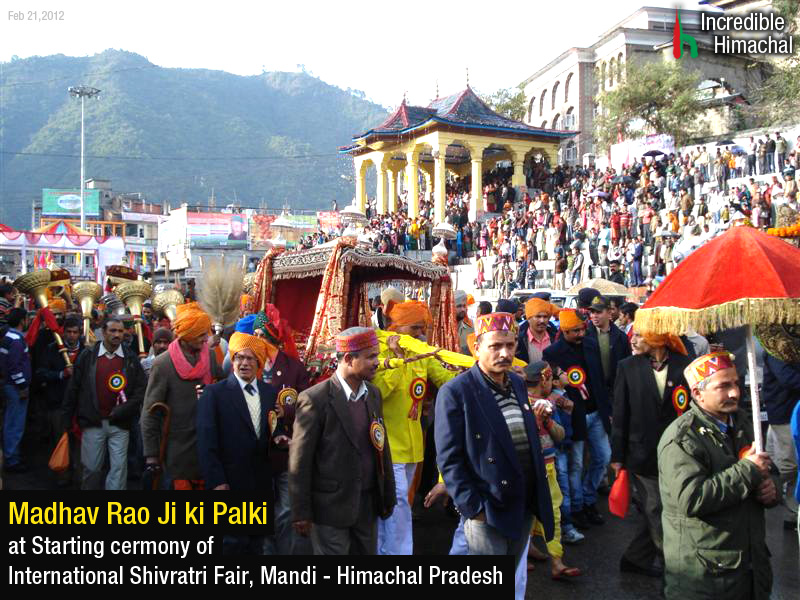
However, Himachal as I have already told you, is an abode of gods (Dev Bhoomi) and some festival or the other is always in progress. During our visit on 13th Sep, therefore, we could see one or two of the idols on the roads. In the olden days when I resided in Mandi as a child and boy they used to walk all the way. However, now they walk only the remaining one or two kilometers.
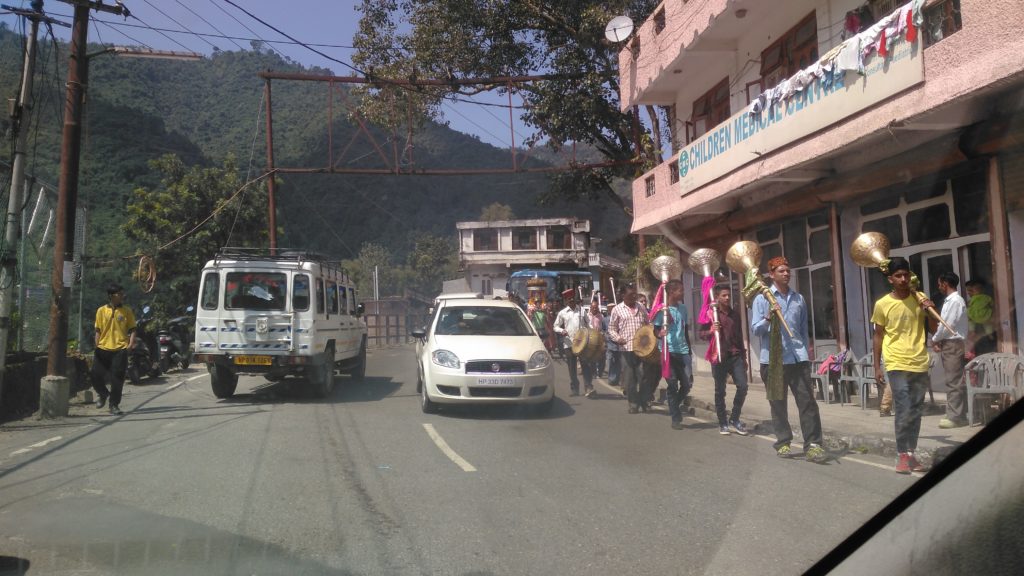
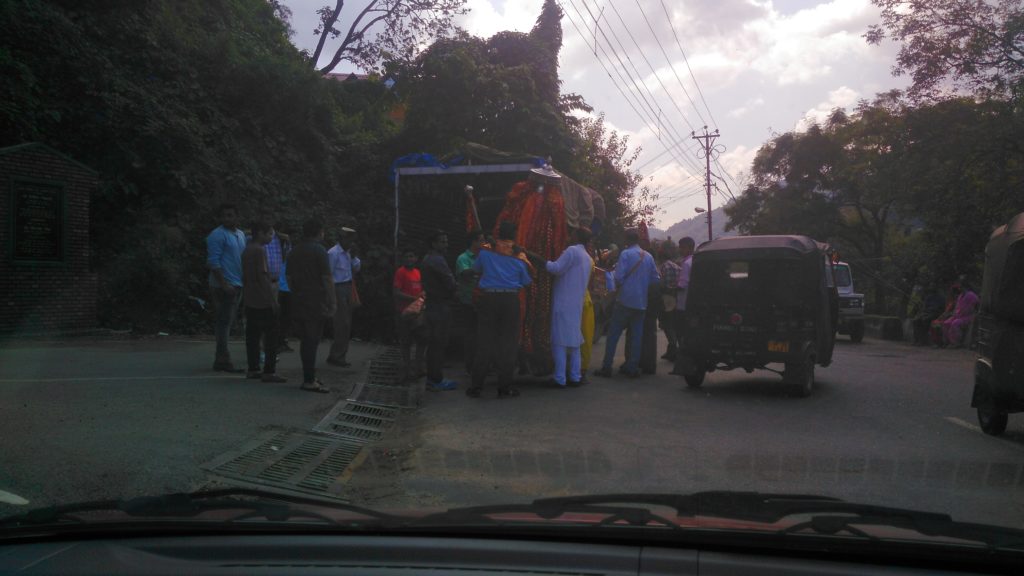
Because of the ever increasing importance of International Maha Shivratri, the Madhav Rai (a name for Lord Krishna holding the flute) is the most famous temple of Mandi now. I told you about Mandi city having been founded by Raja Ajbar Sen. His successor, Raja Suraj Sen built the temple in the 17th century.
BMadhav Rai temple is one of the famous and religious temples of the Mandi district. This temple was built by the Raja Suraj Sen in the 17th century as one of the several temples of Lord Vishnu. He became the ruler of the Mandi after the Raja Ajbar Sen who is the one of the greatest ruler of the Mandi district. This Madhav Rai temple is of Lord Vishnu, in this temple there is an idol of the Lord Vishnu is placed. During his time period he had made so many temples and all of them are of the Lord Vishnu. This was to offset the focus on only Lord Shiva (the Bhootnath Temple) by his predecessor.
We went to the Victoria Bridge, a suspension bridge built during the reign of Raja Bijai or Vijay Sen who also built my school and hospital etc. From there we could see the Madhav Rai temple, next to River Beas.
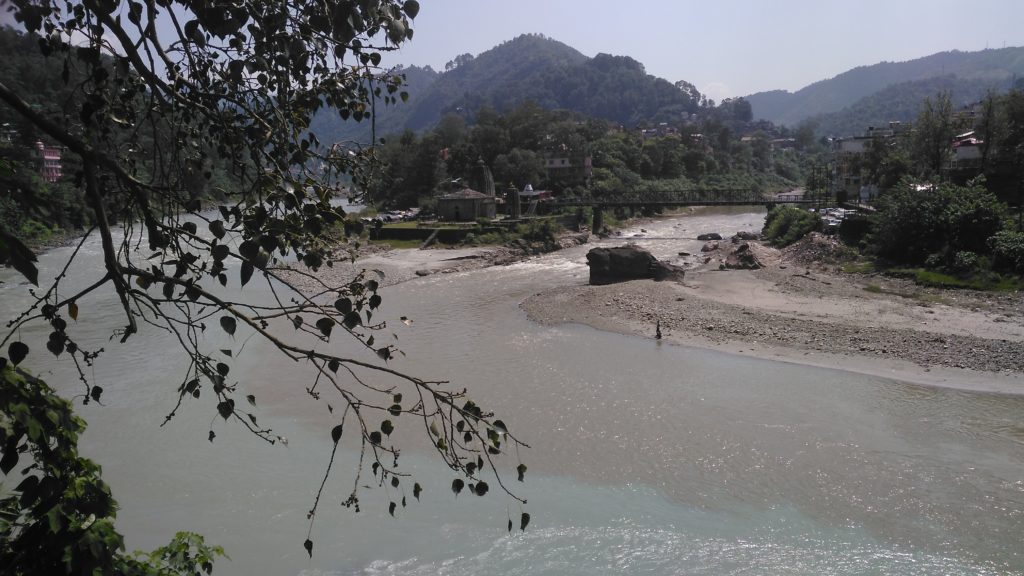
Victoria Suspension Bridge over Beas was the next focus of our attention. This bridge was made during the reign of Raja Vijay in 1877 and I have many nostalgic memories of this bridge. This was the bridge I crossed twice a day from Jawahar Colony to my school via the Bhootnath temple during my schooling from 2nd to 8th standards. We noticed now that the bridge has steel sheets and sides. During my childhood, these were all wooden planks and I used to walk on the side planks. Whenever a vehicle would cross over the bridge, the entire structure used to shake and I used to hold on to the sides for dear life. I remember during the 1965 war when a military convoy passed over the bridge my raincoat flew out and I nearly followed the raincoat into the river. The river used to be full of pine and cedar wood logs being transported through the river. Divers with inflated leather bags would swim along the banks guiding the logs to midstream. All these memories came back to me as negotiated the bridge and took pictures:
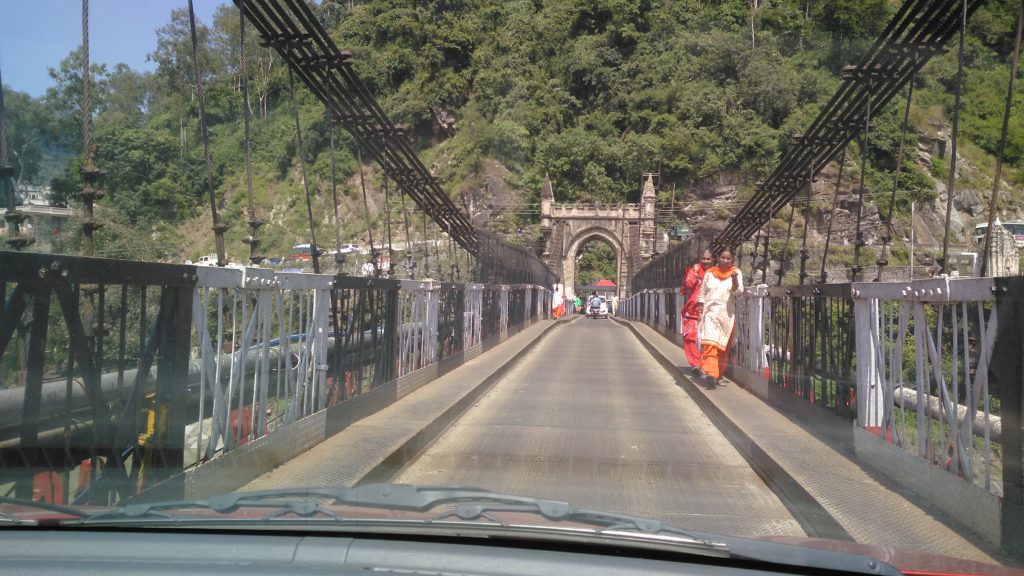
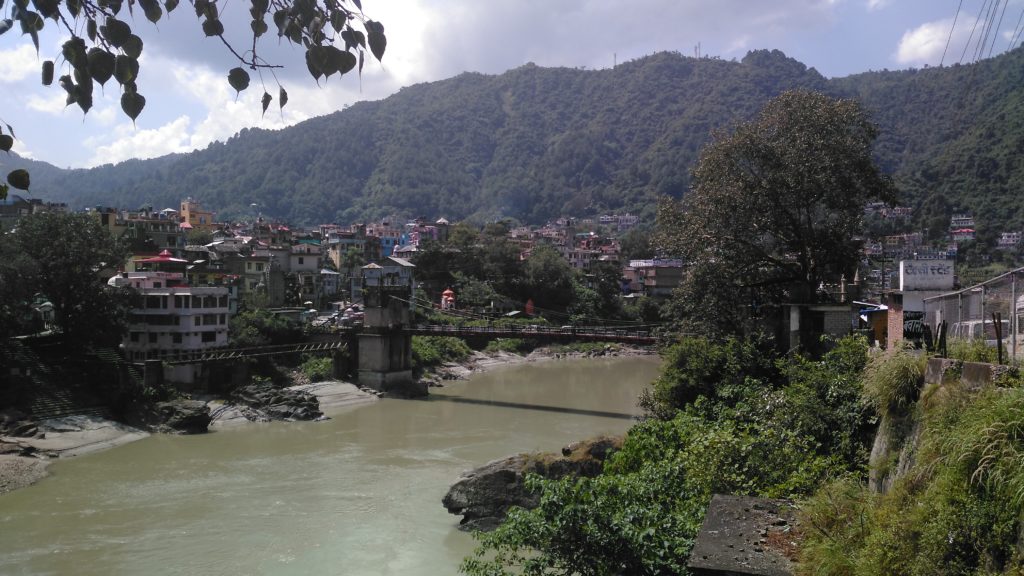
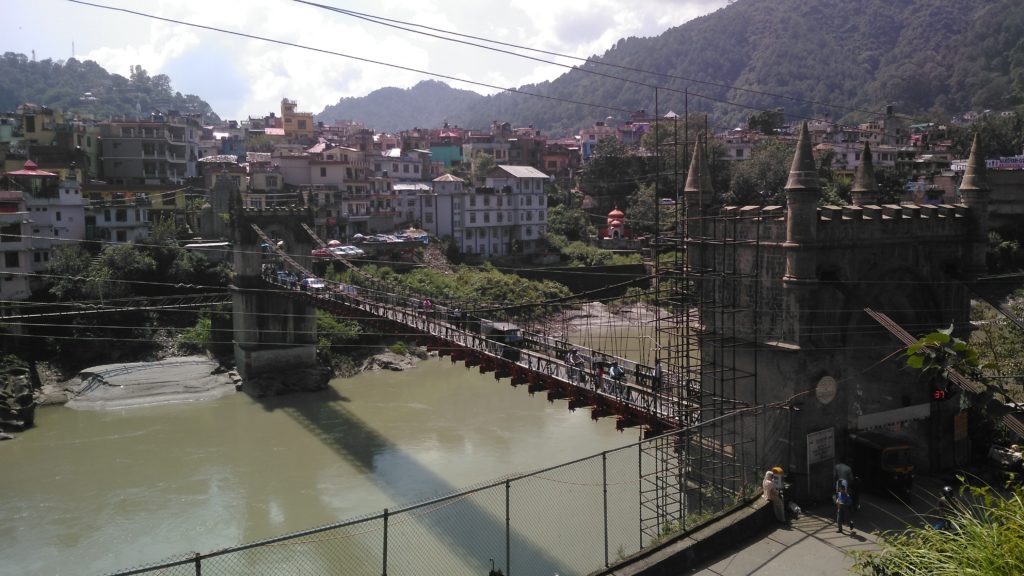
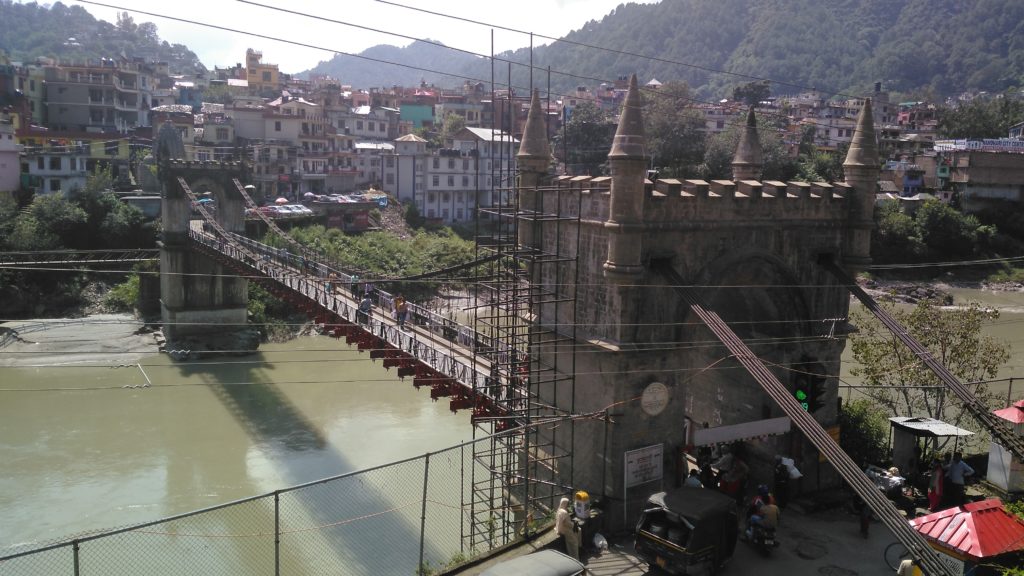
The next thing (the most nostalgic, of course) for me to do was to find our ealier house in the Jawahar Colony. First, some pictures of my childhood/boyhood days in that house:
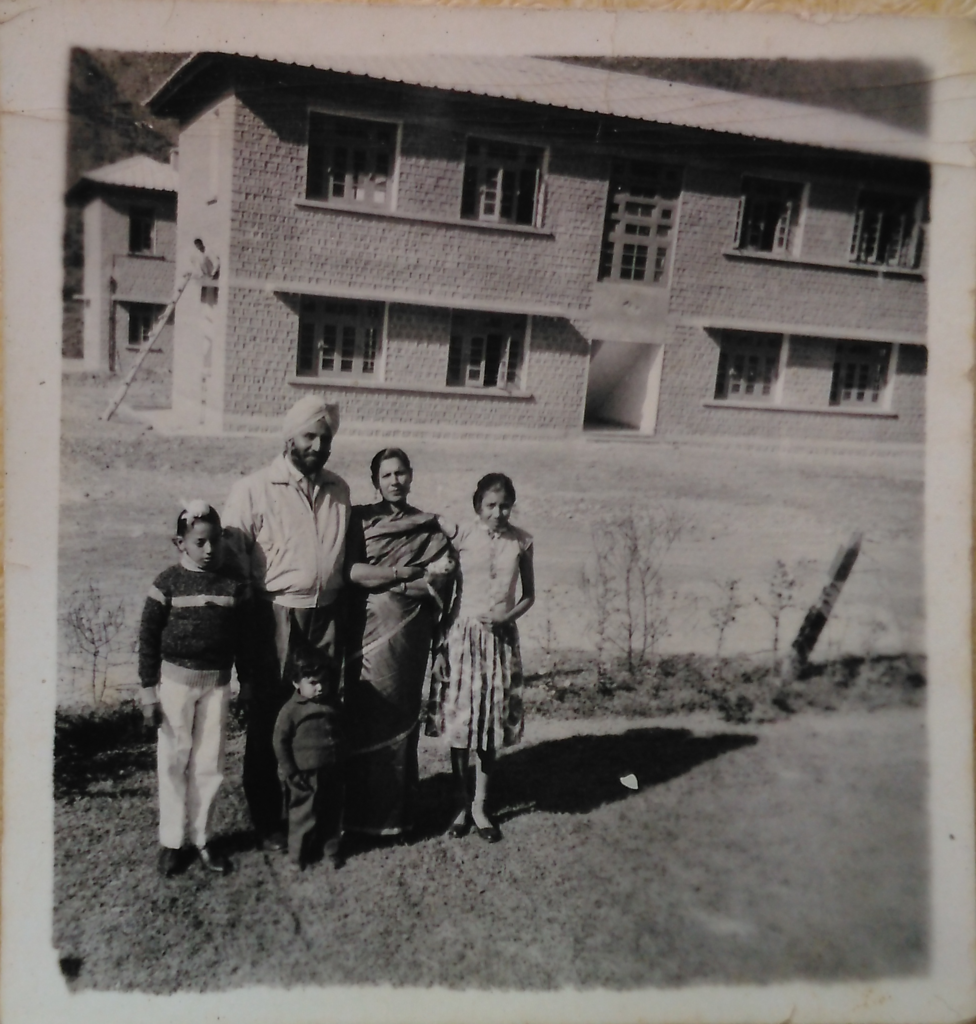
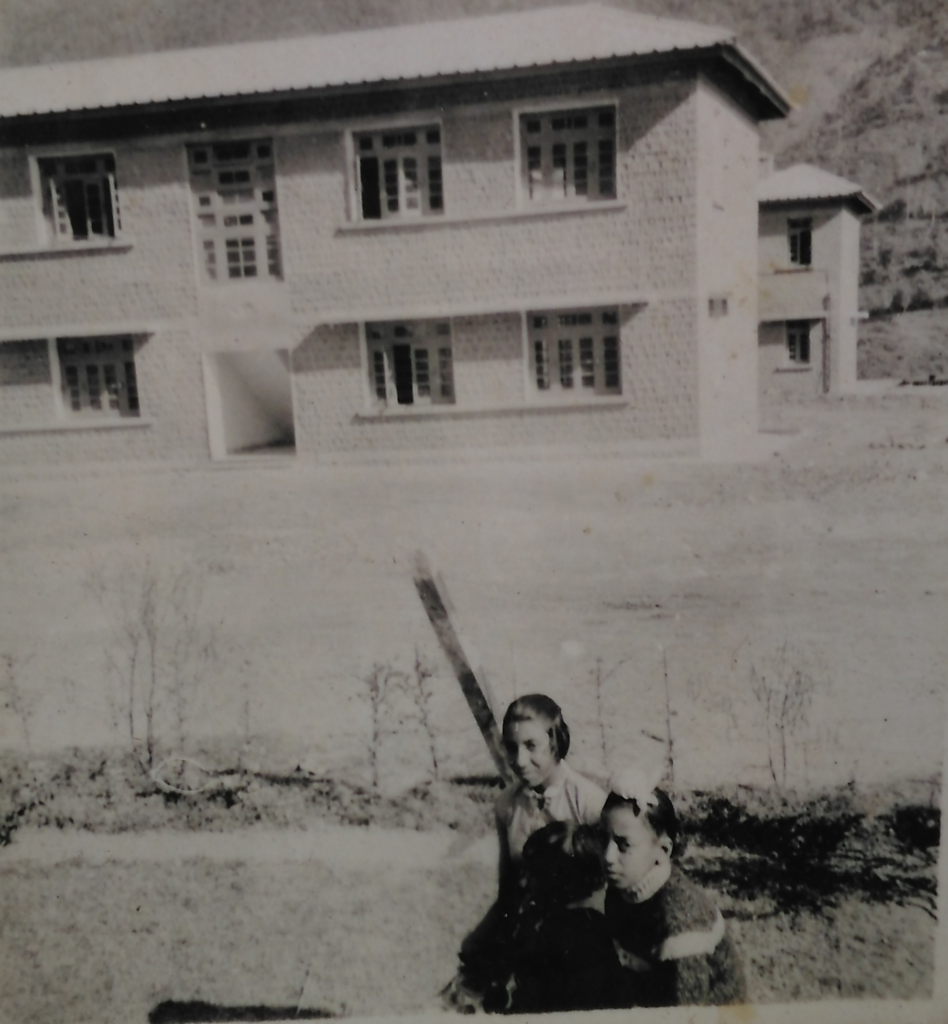
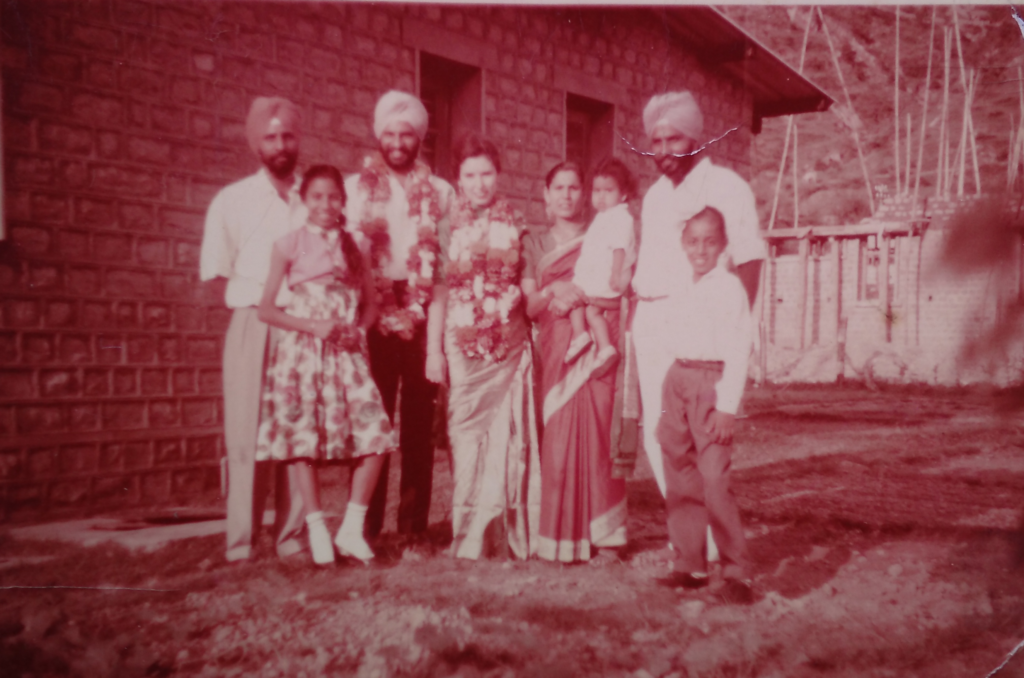
And this is how we found the house now:
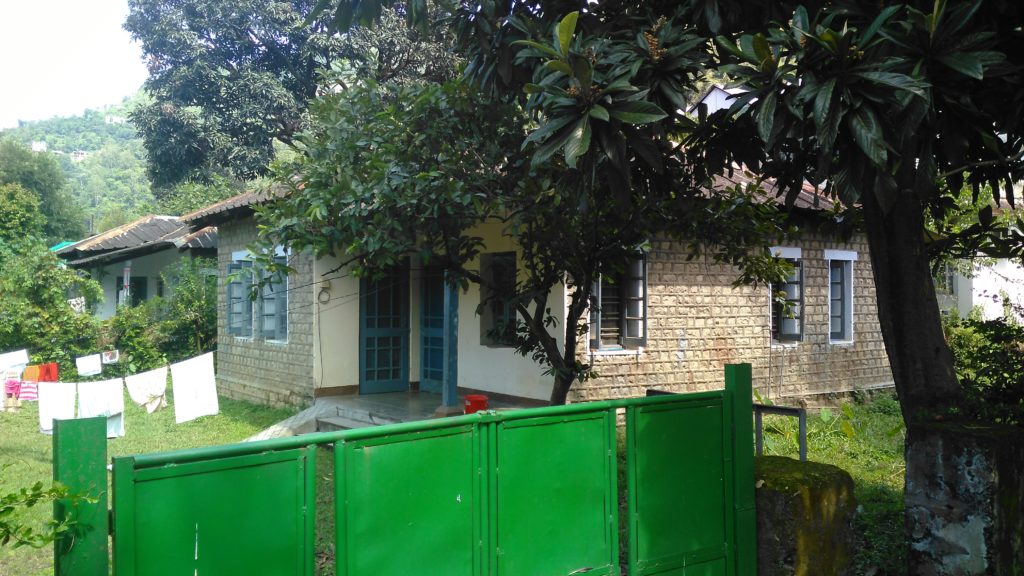
Finding our old house after fifty years did bring a lump in my throat. From here, we used to walk to the Gurudwara on the other end of the city on Sundays (on Manali Road). The Gurudwara is named after Guru Gobind Singh, the tenth Guru of the Sikhs who came to these parts (Also read: ‘Himachal The Beautiful State, Part I – Rewalsar’) gathering support in war against the Mughal King Aurangzeb. The Gurudwara is also called Gurudwara Palang Sahib since it adorns the original palang (cot) on which the Guru Sahib used to sleep:
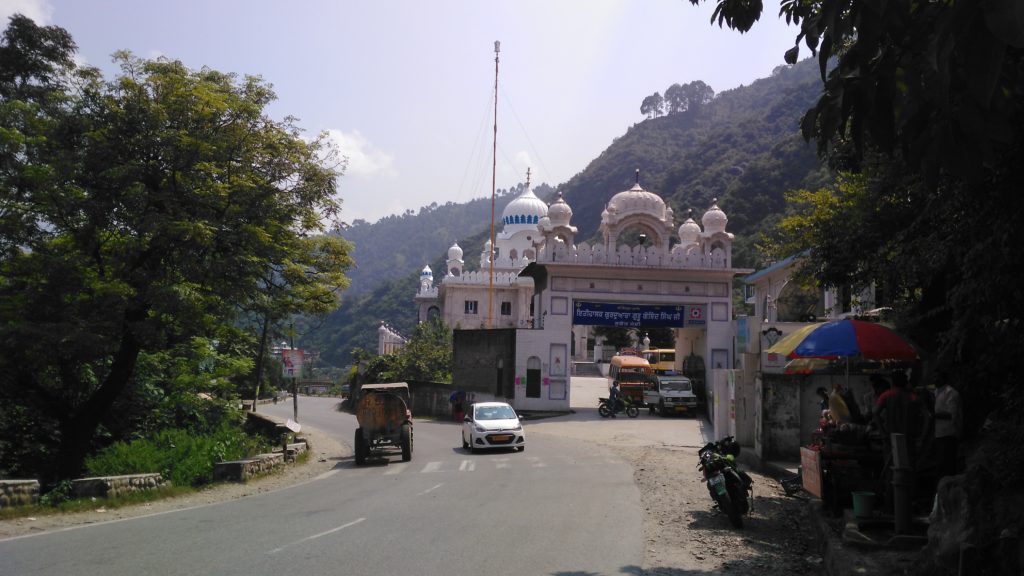
If you have read ‘Himachal The Beautiful State, Part I – Rewalsar’, you would have read a mention of Padmasambhava (Guru Rinpoche) having been burnt alive by the raja of Mandi for teaching tantric vidya to the princess Mandarava. If you recall I had told you that his pyre burnt for a week until he appeared in the midst of lake (Tso Pema) as a young lad sitting on a lotus. The raja of Mandi then repented his deeds and married Mandarava to Pdmasambhava. Mata Kuan Rani temple in Mandi has the idol of the deity Mandarava:
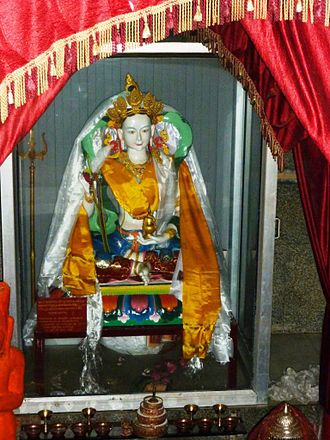
The last place that we visited in Mandi is equally nostalgic for me: the Ghanta Ghar (Watch Tower), the centre-place of the city of Mandi that is equi-distant (within walking distance) from both, my erstwhile school Vijay High School and the Bhootnath temple. It is here that I used to go during the lunch-break from the school with my tiffin. On the stage here I acted in a school-play during the Maha Shivratri festival. Overlooking this is the Rajah’s palace. During my childhood days, all the deities from the temples used to gather here for the Shivratri. Nowadays because of larger crowds, these gather at the Paddal Ground. We also saw that the stage has now got a thriving farm-produce market and we ourselves bought some walnuts from there. Enjoy the pics:
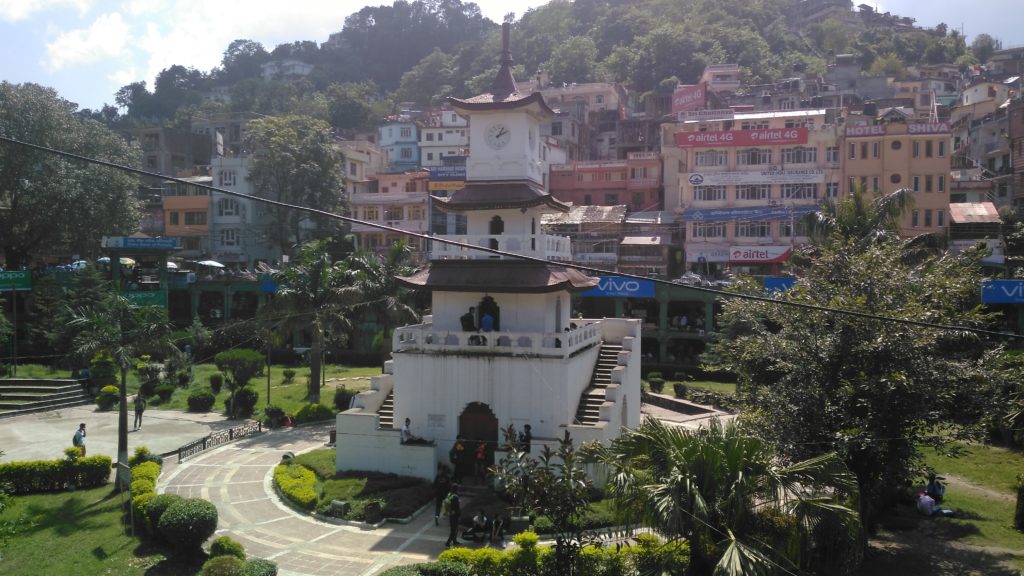
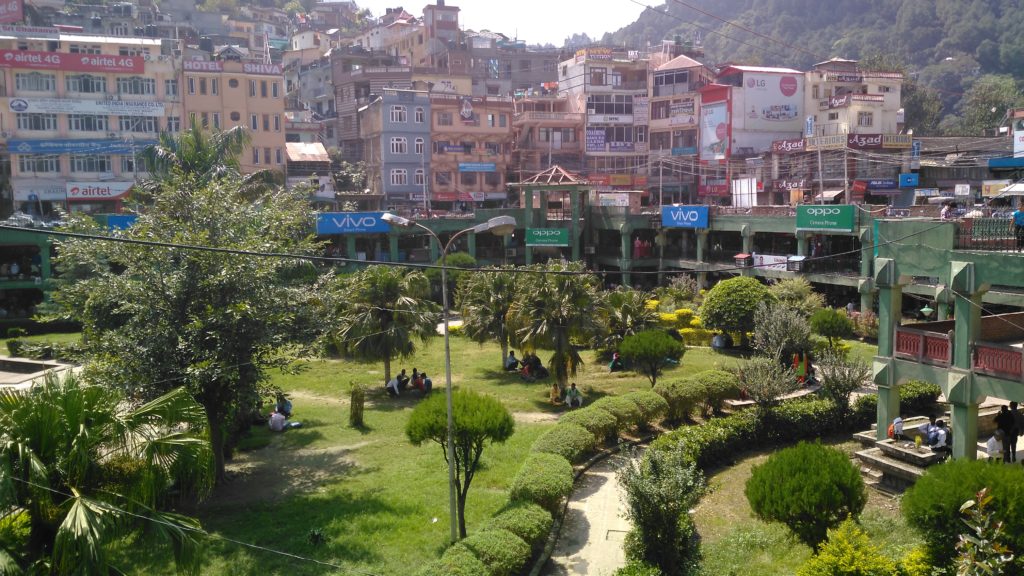
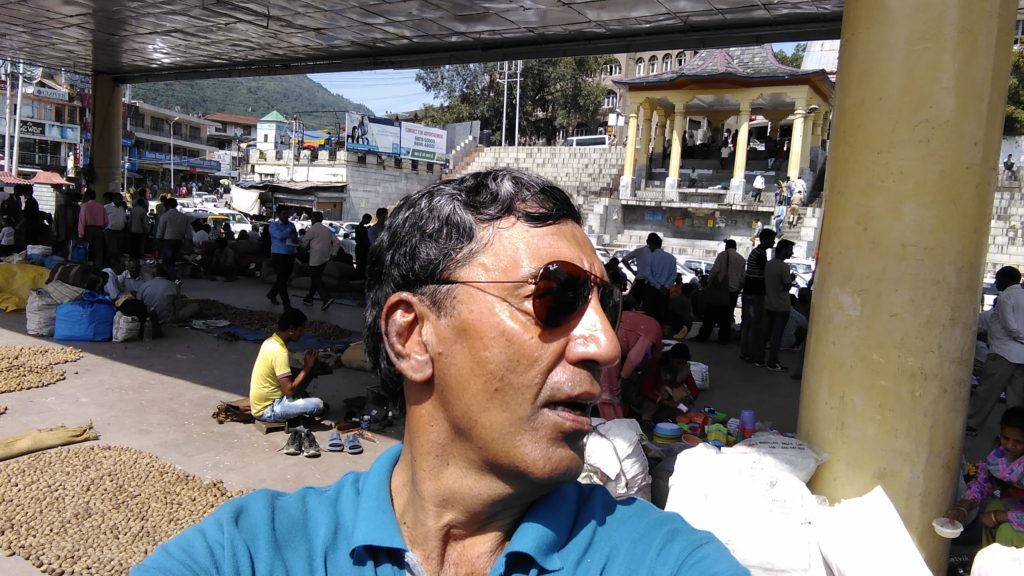
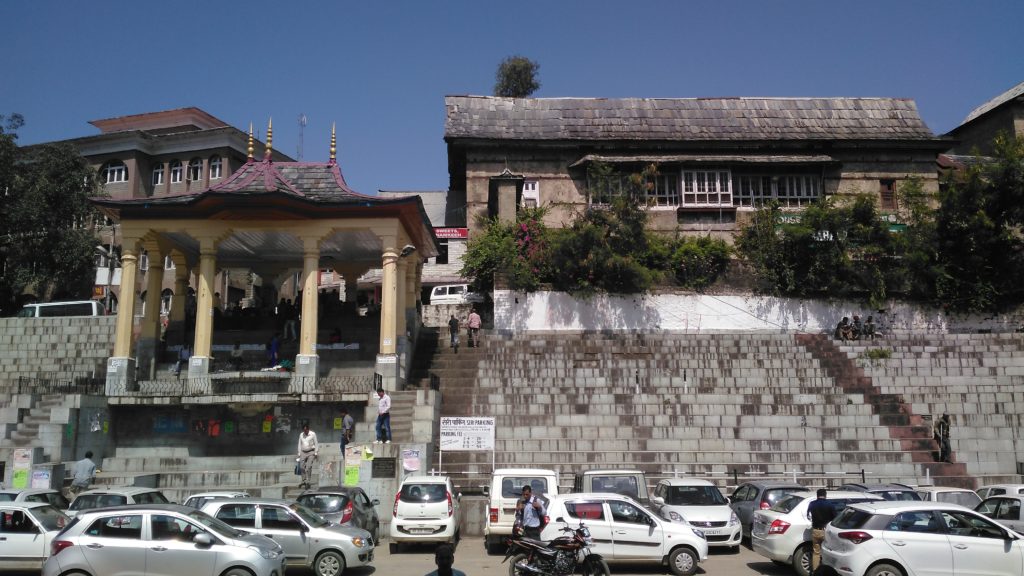
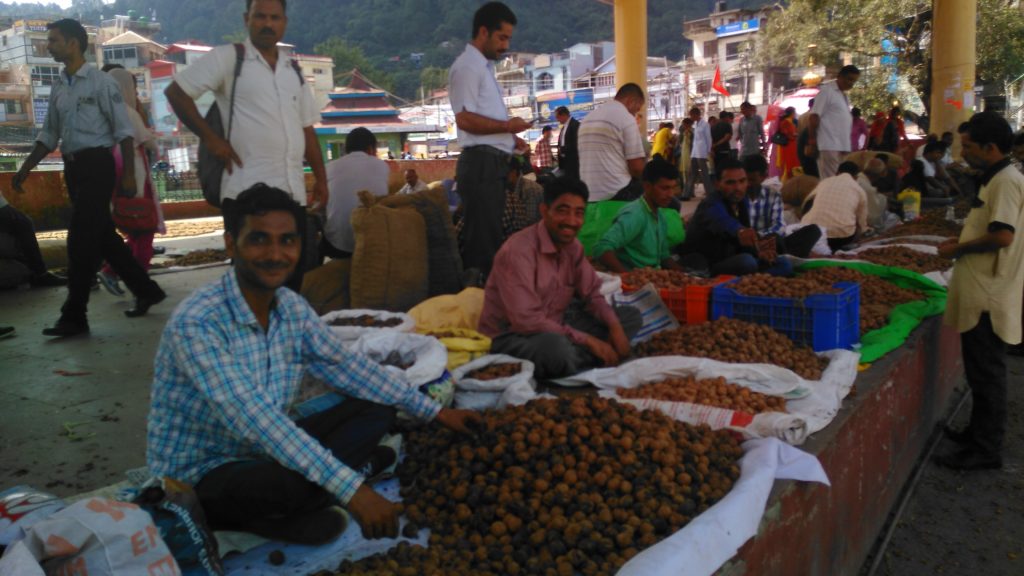
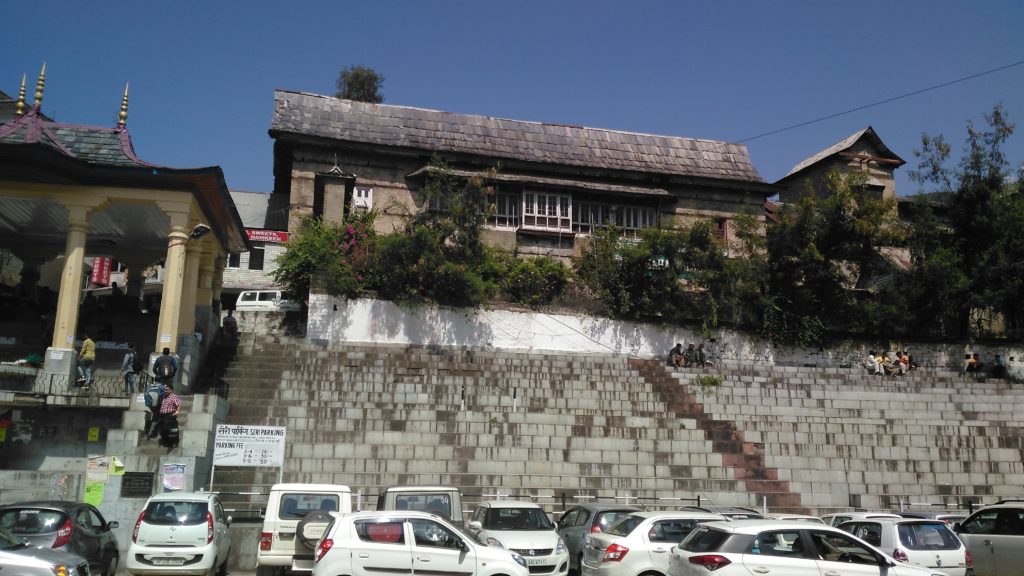
As we bid good-bye to the historic city of Mandi, the name that derived from the market-place that you saw in the heart of the city and also because of the sage Mandav who prayed in this area, I had re-lived, even for half a day, my childhood and early boyhood spent there. Mandi, to me, shall always remain a city next to the beautifully flowing Beas river and the temples and Gurudwara situated right next to it.
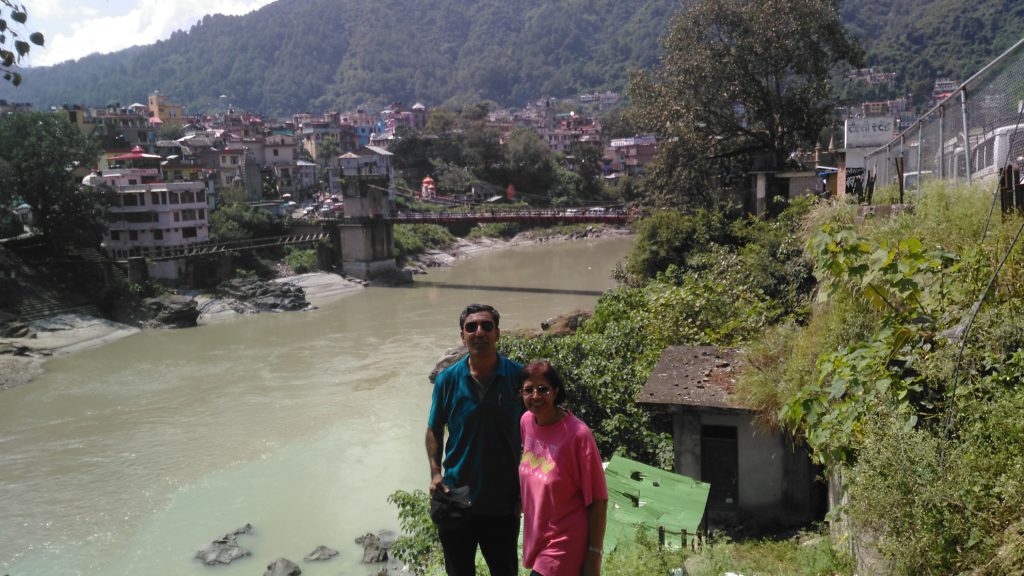
Please await my next travelogue about my state, the most beautiful state of Himachal.
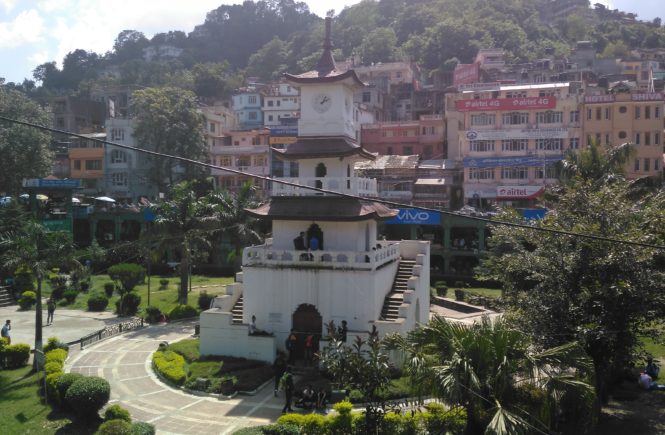
Quite nostalgic account. After goinig through all the three posts , I can conclude yours’ this trip has been of supreme excellence . I hope , the remarkably beautiful photographs have been shot with a HIFI camera and not with mobile. And if these were with mobile, certainly, I have hit the wall of my room in astonishment.
Thank you Jaswant. There is more to come: that is our trips to Raju Bharti Guest House, Manikaran, Manali, Rohtang Pass, Nagger and Kulu. I am compiling these. Lets see when I shall post these.
As far as camera is concerned, one doesn’t require a HiFi camera. Himachal is so beautiful that its beauty can be seen and caught anywhere with any gadget.
Agreed Sir. The beauty of Himachal captured by any gadget reflects itself magnified unbelievably. But in my comment above I was intended to mention your photography genius. Thanks for responding.